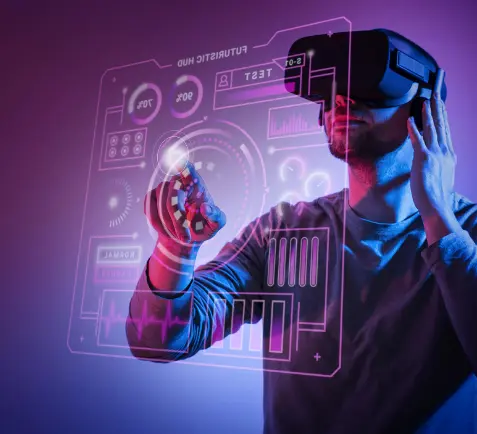The healthcare landscape in the Middle East has significantly transformed in the past few decades, driven by changing demographics and rapid digitalization.
This blog explores the demographic insights from the region, the recent changes in digital healthcare, emerging customer experience (CX) trends, and strategies for healthcare companies to adapt.
Demographic Insights from the Region
The Middle East is a diverse region with varying healthcare needs and challenges. Understanding the demographics is crucial for healthcare providers and policymakers. Here are some key insights:
Population Growth: The demographics of the Middle East and North Africa (MENA) region show a highly populated, culturally diverse area spanning three continents. The class, cultural, ethnic, governmental, linguistic, and religious makeup of the region is highly variable.
- Aging Population: The region is also experiencing a demographic transition, with shrinking fertility rates and lengthening life expectancies. This results in a youth bulge and an aging population more prone to chronic diseases and requires regular touchpoints with healthcare services. According to the International Diabetes Federation, Saudi Arabia and the UAE ranked 10th and 12th, respectively, in the prevalence of diabetes globally in 2018.
- Medical Tourism: Many countries in the Middle East form a significant chunk of the global medical tourist population. Based on a report, 30% of annual medical tourists were from the Kingdom of Saudi Arabia. This offers possibilities in tie-ups with international hospital chains and remote care or post-operation care through telehealth solutions.
From a CX standpoint, this poses exciting challenges for companies assisting the digitalization of the healthcare industry. On the one hand, technology needs to be modern and intuitive. On the other hand, the functionalities must be simple enough for the slightly aged population to use easily.
How Digital Healthcare has Evolved
The COVID-19 pandemic has accelerated the adoption of digital healthcare solutions in the region, as patients and providers sought to access and deliver healthcare services remotely and safely. According to a report by McKinsey, the percentage of consumers using telemedicine in Saudi Arabia and UAE increased from 9% before COVID-19 to 41% during COVID-19. Moreover, 80% of consumers said they would likely use telemedicine again post-pandemic.:
- Telemedicine Adoption: Telehealth platforms have gained popularity, offering remote consultations, especially during the COVID-19 pandemic. OKADOC is a UAE-based platform connecting users with healthcare providers across the MENA region. OKADOC lets users find and book appointments with doctors, clinics, and hospitals online.
- Health Apps: There’s been a surge in health and wellness apps, allowing patients to monitor their health and access information conveniently. GetBEE, a UAE-based platform that offers online consultation and coaching services, will enable users to access online sessions with experts in various fields, such as nutrition, fitness, wellness, and psychology.
- Electronic Health Records (EHRs): The adoption of EHR systems has improved data management and patient records accessibility.
Emerging CX Trends in Healthcare
The evolving healthcare landscape in the Middle East is leading to emerging CX trends:
As digital healthcare solutions become more prevalent and accessible in the region, customers expect more from their healthcare providers regarding quality, convenience, transparency, and personalization. Some of the emerging CX trends that are influencing the healthcare sector in the region are:
- Customer-centricity: Customers want to be treated as individuals with unique needs and preferences. They want to have more control over their health choices and outcomes. They also want more access to information and feedback about their health status and treatment options. Nabta Health, a MENA-based application providing women’s health and wellness solutions, perfectly encapsulates this need. Nabta Health combines AI, blockchain, and IoT to offer personalized and holistic care for women.
- Omnichannel integration: Customers want seamless and consistent experiences across channels and touchpoints. They want to switch between online and offline modes without losing context or quality. They also want to have a single point of contact for all their healthcare needs.
- Value-based care: Customers want to receive value for their money. They want to pay for outcomes rather than inputs. They also want more transparency about the costs and benefits of different healthcare services. For example, the Egypt Ministry of Health’s Universal Health Insurance System is a comprehensive reform that aims to provide universal health coverage to all citizens by 2030. The system is based on a social health insurance model, where providers are contracted and paid based on the quality and outcomes of care they deliver.
Adapting to Emerging Trends
To cater to these evolving trends, healthcare companies should consider the following strategies:
- Invest in Technology: Allocate resources to implement advanced healthcare technologies such as AI, telemedicine, and EHR systems. Mantra Labs has worked extensively with prominent Healthcare providers in India and the USA to deliver top-notch successes for customers and patients.
- Training and Education: Healthcare professionals should be trained to use digital tools and provide compassionate care effectively.
- Data Security: Ensure robust data security measures to protect patients’ sensitive information.
- Patient Engagement: Foster patient engagement through mobile apps, feedback systems, and personalized communication. Having an ecosystem approach with a 360-degree patient engagement plan is a must.
Conclusion:
The Middle East region is at the forefront of healthcare transformation, with changing demographics and digitalization driving new CX trends. Healthcare companies that adapt and invest in these trends will meet patient expectations and provide more efficient and effective healthcare services.
Knowledge thats worth delivered in your inbox





